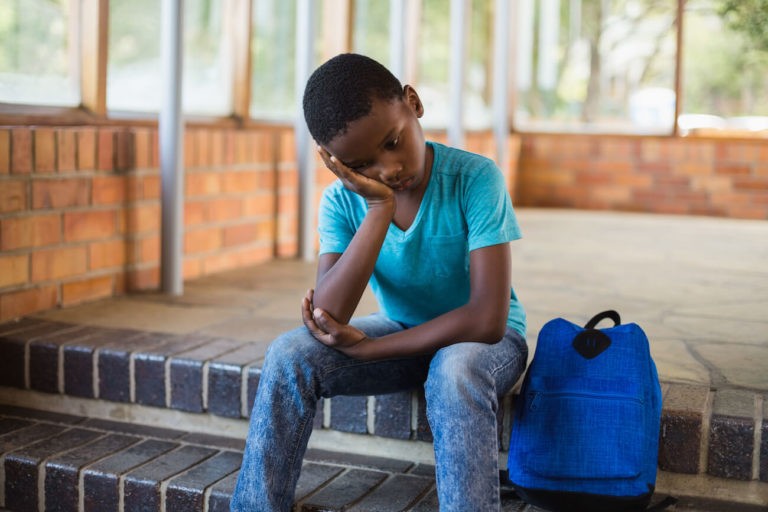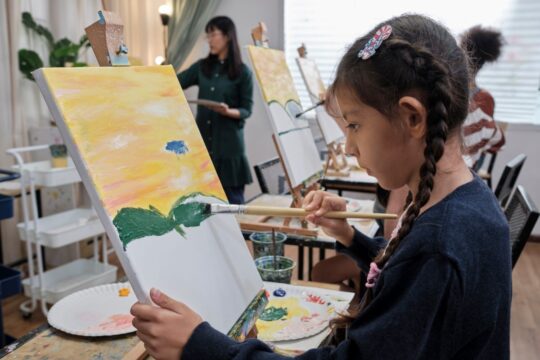As schools across the country make decisions to return to brick and mortar school environments this fall, there is heightened emphasis on ensuring the physical safety of students and staff. While this factor is important, school officials should also include supporting the mental health of students as an equal priority in the implementation plans. The past five months have been challenging on students and their families. And it will be awhile until we truly know the long term effects of this disruption on children and adolescents. Students will face unprecedented challenges like no other time before and they will need the constant support of the adults in their safety net both at home and at school to succeed.
Challenges Some Students May Face When They Return
Educators must be cognizant that students may have experienced “trauma” during the school closures. Although “trauma” can be defined differently person to person, it is important to take note that mental health problems and their symptoms often begin surfacing during early adolescence (ages 10-14). In addition, students already struggling with depression and/or anxiety may have had their symptoms exacerbated such as having thoughts of suicide or self-harm. However, even students who do not have mental health issues or symptoms may have experienced “trauma”. This time of extended stay-put orders and quarantine caused massive changes to students’ normal lives which produced a varying array of emotions and feelings.
All students were placed in a position of possible fear and loneliness due to the disconnection from normal social outings due to the measures to stay safe. Social connections are vital so that children and adolescents develop proper psycho-social skills. The extended time away from school may have produced a fear of losing friends; depression over lack of social interaction; anxiety over risk of being exposed to the virus; a disruption in normal sleeping and eating patterns; and feelings of uncertainty over the future.
Also, the family unit may have changed radically. Front line workers may have had to stay away from home due to increased chance of infecting family members. Parents may have had to work from home causing an increase in stress balancing work, family, and children’s school work.
In addition to these factors, there are students who may have also had to deal with an increased exposure to abuse, violence, and/or neglect at home; an increase in substance abuse in the home; an economic hardship due to loss of parent employment; or the experience of the death of a family friend or relative due to the virus or other causes.
How to Support Students’ Mental Health
Due to all the many possible feelings and experiences that students have been dealing with at home, we as educators must be mindful of these variables while planning a return to educating our youth this fall. The continuity of learning plan that each school implements includes provisions that outline how changes in procedures will occur if there is a detected exposure to the virus.
A variety of different learning approaches may be implemented such as hybrid models and will be used to teach in both traditional and virtual ways; as well as a total virtual learning model using asynchronous and/or synchronous modes of learning. This will require additional patience and understanding with our students. Also, students will be faced with additional changes such as regular temperature screenings, physical distancing, and wearing personal protective equipment such as masks and gloves.
However, the school’s continuity of learning plan should also address student mental health in these reintegration efforts. The following actions are suggestions that we either implement, support, or advocate for to support the mental health needs of our students:
- Adopt a “whole child” mindset. Ensure that you are providing a supportive and nurturing learning environment by incorporating social and emotional learning practices in your classroom regardless of what type of learning mode you are using. A social-emotional learning (SEL) curriculum should be implemented if one does not already exist to help students learn how to connect themselves with others and build relationships.
- Administer diagnostic assessments to prioritize the social and emotional needs of students. It is important to identify the most vulnerable students to activate the appropriate level and type of support. Avoid use of stereotypes and stigmas when assessing students to provide the necessary support.
- Do not overlook the inequities that were revealed during the school closures. We have uncovered more instances of poverty, history of trauma, history of mental illness, learning disabilities, English language learners, etc. in our student population. We must not forget these vulnerable populations and apply the adequate support and provisions to make reintegration efforts easier.
- Increase access to mental health supports for students. In addition to school counselors, school social workers, and school psychologists already in place, look to other community organizations for additional support. Advocate to expand access to counseling services using online and videoconferencing systems.
- Support and embrace the use of social media by teaching necessary digital literacy skills and knowledge so that students use technology in safe and secure ways. Social media and virtual contact may have been the only way students felt supported, connected, and understood. During the quarantine, students stayed connected through the use of Snapchat and Instagram or playing interactive games like Animal Crossing, Roblox, and Minecraft. Reducing this important part of their “new social” life may have a negative impact.
- Educate parents on common online social media applications to better support and supervise their children’s use of technology.
We have many challenges to face in the coming weeks and months. Changes will be ongoing and daunting at times. However, it is important to recognize the challenges that some students may face and create a safe space for students where they feel accepted and connected when they return to school this fall, whether it is a brick-and-mortar setting, virtual, or hybrid situation. Students need to feel supported and understood to make it through this very tumultuous time in their lives.




